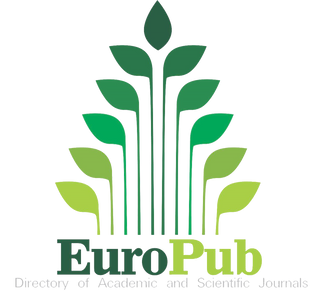Način i učestalost korištenja parkovske baštine na primjeru Banjskog parka Ilidža
DOI:
https://doi.org/10.54652/rsf.2020.v50.i2.347Sažetak
This paper presents manner and frequency of using park heritage on the example of Ilidža Spa Park. The aim of the research is to determine the attitudes of visitors to the Spa Park about the manner and frequency of using the park heritage, as well as the possibility of restoring some historical elements. The research was conducted through a questionnaire, quantitative type, in the period from August 23, 2017, to September 29, 2017. The total number of respondents is 246, of which 56.1% are female and 43.9% are male. As the best-rated contents (grade very good) the majority of respondents state the availability (37%) and quality of greenery (20.3%) while the worst-rated (grade very poor) cultural contents (6.5%). Most respondents have a positive attitude towards restoring the original appearance of some parts of the park (70.7%) as well as for restoring the historical elements - pavilions and old benches (72.8%). The park needs to be legally protected as a park heritage, ie a cultural and historical heritage with unchanged boundaries and a large part of the historical matrix. It needs to be renovated with the allocation of larger financial resources for maintenance and protection. The results of this research will expand the existing knowledge about the satisfaction of visitors to the Ilidža Spa Park, and contribute to experts to solve problems in finding the possibility of applying methods of restoration and restoring the original appearance of this historic park.
Downloads
References
Adevi, A. A.; Lieberg, M. (2012): Stress Rehabilitation through garden therapy. A caregiver perspective on factors considered most essential to the recovery process. Urban Forestry & Urban Greening, Vol. 11, No. 1, pp. 51-58. https://doi.org/10.1016/j.ufug.2011.09.007
Anderson, B. J. (2011): An Exploration of the Potential Benefits of Healing Gardens on Veterans with PTSD. All Graduate Reports and Creative Projects, Utah State University, Logan, Utah.
Bašić, N.; Hadžidervišagić, D.; Hadžić, S. (2019): Inventarizacija dendroflore Banjskog parka Ilidža kod Sarajeva. Naše šume, UŠIT FBiH, God. XVII, Br. 56/57, Sarajevo, str. 79-89.
Berman, M. G.; Kross, E.; Krpan, K. M.; Askren, M. K.; Burson, A.; Deldin, P. J.; Kaplan, S.; Sherdell, L.; Gotlib, I. H.; Jonides, J. (2012): Interacting with nature improves cognition and affect for individuals with depression. Journal of affective disorders, 14, pp. 300-305. https://doi.org/10.1016/j.jad.2012.03.012
Brajić, A. (2011): Utvrđivanje zahtjeva posjetilaca prema javnom gradskom zelenilu – studij slučaja „Vrelo Bosne“. Master rad, Šumarski fakultet Univerziteta u Sarajevu, Sarajevo.
Catlin, P. (2003): Developmental disabilities and horticultural therapy practice. U: S. P. Simson and M. C. Straus, Horticulture as therapy: principles and practice, Food Products Press, An Imprint of the Haworth Press, Inc., New York, pp. 131-156.
Cooper, M.; Barnes, M. (1999): Healing gardens: therapeutic benefits and design recommendations. Wiley, New York.
Davis, H. A. (2003): Conceptualizing the role and influence of student-teacher relationship on children's social and cognitive development. Educational Psychologist, Vol. 38, No. 4, pp. 207-234. https://doi.org/10.1207/S15326985EP3804_2
Derkzen, M. L. (2012): Experiencing the Urban Green Space: An exploratory study of visiting behaviour, perceptions and preferences in the urban green spaces of São Paulo, Brazil. Master thesis, Faculty of Geosciences, Department of Innovation and Environmental Sciences, Utrecht University.
De Vaus, D. (2002): Surveys in Social Research. 5th Edition, Allen & Unwin, St. Leonards, NSW.
Frumkin, H. (2001): Beyond toxicity: Human health and the natural environment. American Journal of Preventive Medicine, Vol. 20, No. 3, pp. 234-240. https://doi.org/10.1016/S0749-3797(00)00317-2
Gabrieli, M.; Wilson, R. (2010): The Royal Parks. Park research report 2009 ‒ all parks combined, Synovate Ltd.
Galečić, N. (2016): Evaluacija upotrebnog potencijala parkova Beograda u funkciji operacionalizacije procesa pejzažnog projektovanja. Doktorska disertacija, Šumarskifakultet Univerziteta u Beogradu, Beograd.
Gehl, J. (2008): Life Between Buildings: Using Public Space. 6th Edition, Island Press, Exeter, United Kingdom.
Godbey, G.; Mowen, A. (2010): The Benefits of Physical Activity Provided by Park and Recreation Services: The Scientific Evidence. National Recreation and Park Association, Ashburn.
Hadžidervišagić, D. (2018): Pejzažno-arhitektonska i istorijska analiza Banjskog parka Ilidža kod Sarajeva ‒ koncept razvoja. Doktorska disertacija, Šumarski fakultet Univerziteta u Sarajevu, Sarajevo.
Hadžidervišagić, D. (2011): Sociološki aspekti urbanih zelenih površina u Sarajevu. Šumarstvo, UŠIT Srbije, God. LXIII, Br. 1-2, Beograd, str. 71-81.
Hadžidervišagić, D.; Čabaravdić, A. (2021): Važnost i strukturna raznolikost stabala u povijesnom parku. Šumarski list, Hrvatsko šumarsko društvo, God. CXLV, Br. 3-4, Zagreb, str. 117-125. https://doi.org/10.31298/sl.145.3-4.1
Hadžidervišagić, D.; Krstić, P. (2019): Analiza i obnova vrtno-arhitektonskih elemenata Banjskog parka Ilidža kod Sarajeva. Naše šume, UŠIT FBiH, God. XVII, Br. 56/57, Sarajevo, str. 69-78.
Jim, C. Y.; Chen, W. Y. (2006): Recreation-amenity use and contingent valuation of urban greenspaces in Guangzhou, China. Landscape and Urban Planning, Vol. 75, No. 1-2, pp. 81-96. https://doi.org/10.1016/j.landurbplan.2004.08.008
Knez, A.; Dolenc, N.; Bokan, N.; Jurić, D.; Kovačević, D. (2013): Višeosjetilni park u Zagrebu - informiranost građana. u: J. Božičević, M. Nikšić, T. Mlinarić i E. Missoni (ur.), Zelenilo grada Zagreba, Hrvatska akademija znanosti i umjetnosti, Zagreb, str. 17-25.
Konijnendijk, C. (2008): The Forest and the City: The Cultural Landscape of Urban Woodland. Springer, New York.
Lee, Y-C.; Kim, K-H. (2015): Attitudes of Citizens towards Urban Parks and Green Spaces for Urban Sustainability: The Case of Gyeongsan City, Republic of Korea. Sustainability, 7 (7), pp. 8240-8254. https://doi.org/10.3390/su7078240
Ljujić-Mijatović, T.; Avdić, J. (2002): Vrednovanje bioloških determinanti u sklopu rekonstrukcije povijesnog parka Ilidža. Radovi Poljoprivrednog fakulteta Univerziteta u Sarajevu, God. XLVII, Br. 51, Sarajevo, str. 135-146.
Mešić, A.; Hadžidervišagić, D.; Spasojević, B.; Bašić, N. (2017): Inventarizacija i zaštita parkovske baštine na primjeru Gradskog parka „Zrinjevac“ u Mostaru. Naše šume, UŠIT FBiH, God. XVI, Br. 46/47, Sarajevo, str. 42-49.
Mišetić, A. (1997): Socijalne značajke Rive u životu grada - primjer Splita. Društvena istraživanja, God. 6, Br. 1 (27), Zagreb, str. 71-87.
Nagy, K. (2002): Public Use of the Public Parks and Protected Areas of Budapest. In A. Arnberger, C. Brandenburg, A. Muhar (Eds.), Monitoring and Management of Visitor Flows in Recreational and protected Areas, Vienna, pp. 271-276.
Oguz, D. (2000): User surveys of Ankara's urban parks. Landscape and Urban Planning, Vol. 52, No. 2-3, pp. 165-171. https://doi.org/10.1016/S0169-2046(00)00130-4
Schipperijn, J. J. (2010): Use of urban green space. PhD thesis, Forest & Landscape Research No. 45- 2010, Forest & Landscape Denmark, Frederiksberg.
Stanić, S.; Buzov, I. (2014): Značenje zelenih prostora u životu grada. Godišnjak Titius, God. 6-7, Br. 6-7, Split, str. 137-153.
Vitasović Kosić, I.; Aničić, B. (2005): Investigation of Sociological Aspects of the Park Maksimir. Journal Central European Agriculture, Vol. 6, No. 1, pp. 77-84.
Yilmaz, S.; Zengin, M.; Demircioglu Yildiz, N. (2007): Determination of user profile at city parks: A sample from Turkey. Build Environment 42 (6), pp. 2325-2332. https://doi.org/10.1016/j.buildenv.2006.05.001
Živković, J. (2015): Koncept integrisane rekreacije i mogućnosti primene u uslovima razvoja gradova Srbije. Doktorska disertacija, Arhitektonski fakultet Univerziteta u Beogradu, Beograd.























